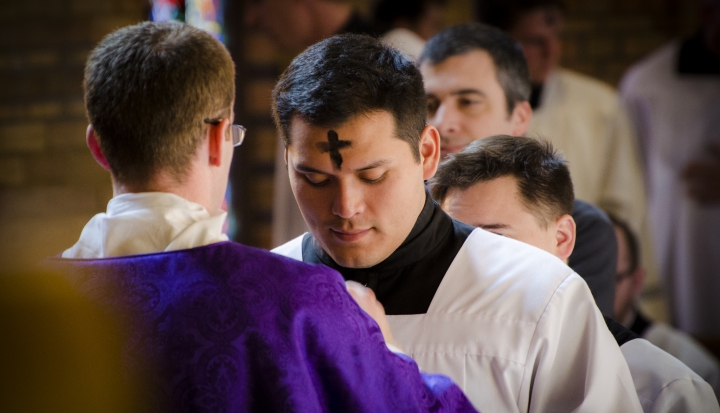Ash Wednesday has become a very popular feast day, perhaps more important to some people than Holy Days of Obligation. At Marquette University, where I teach, Ash Wednesday Mass and the distribution of ashes will positively fill the modest but spacious octagonal chapel in the student union. Student ministers will distribute the ashes, and as many as 200 students will file into the central sanctuary to have an often quite large sign of the cross marked on their foreheads in ash.
Ashes—in some mythologies associated with the origins of things—have been a sacred object for longer than history records. The Aztecs, for instance, believed that human beings were made from ash, and anthropologists have noted the use of ashes for divination (fortune telling) and for purification in a variety of cultures. To burn something to ashes means giving up its use. “Burnt offerings” are frequent in the Bible. And a Jewish ritual in which ashes mixed with water are used to purify the unclean (Numbers 19:9) may be a source for our Catholic ritual.
Covering oneself with ashes has been a sign of mortality, mourning, and penance. Scripture refers to individuals “wearing sackcloth and ashes” and “sitting in ashes.” Wearing ashes is both a natural and a spiritual outward expression of a sense of loss, sorrow, emptiness, and penitence. Originally a sign of private penance, in time wearing ashes was seen as a way to arouse prayerful sympathy in fellow Christians.
Ashes, and their use, constitute one of the “sacramental.” The Catholic Dictionary defines a sacramental as “any object set apart and blessed by the church to excite good thoughts and increase devotion.” Other sacramentals are the sign of the cross, crucifies, and holy water. The ashes used on Ash Wednesday are created by burning palms from the previous Palm Sunday. At the Ash Wednesday Mass the celebrant blesses the ashes, also sprinkling them with holy water.
Ash Wednesday is almost like a holy day, or more than a holy day. Students say, “It’s the one day of the year that you know who believes what you believe.” The ashes on Ash Wednesday have become a mark of Christian identity.
Students come to Ash Wednesday services because there is strength in numbers, observes Father George Winzenburg, the pastor of Gesù Parish, which adjoins Marquette. “They don’t have to convince their peers to attend. Friends respond spontaneously. It’s a new beginning. They have permission to form resolutions and get prepared for Easter.”
But the feast appeals not only to Catholic students and parishioners. “It’s ecumenical,” says Winzenburg. “It cuts across lines between Catholics and other Christian denominations. The power of the Ash Wednesday celebration is irresistible. It’s a feast people want to celebrate.” Winzenburg says young people come to Gesù after the last service, asking, “Can we still get ashes?”
At Marquette, the liturgy planning team tries to relate the distribution of ashes to a particular theme that will then be carried throughout Lent. Last year the phrase accompanying the signing with ashes was taken from a reading in the Old Testament Book of Joel: “Return to God with your whole heart.” That phrase also appeared on the orders of worship and special cards distributed at various functions throughout the Lenten season.
In my college years, wearing ashes was a kind of secret code. Instead of washing or rubbing the ashes off, we would wear them as long as even a smudge was left. I don’t think we were disobeying Jesus’ counsel in Matthew 6:16–18 (one of the readings now frequently chosen for Ash Wednesday) to wash our faces when we fast or do penance. Displaying ashes is a sign of solidarity with other believers.
This year, as in past years, I will smile again when I notice students walking around campus long after Ash Wednesday services are over. Many of them will still have the ashes evident on their foreheads, even if those foreheads are topped by baseball caps turned backwards or are partially hidden by wisps of bangs.
Originally published in the March 2000 issue of U.S. Catholic
Image: Flickr cc via SJV Denver












Add comment